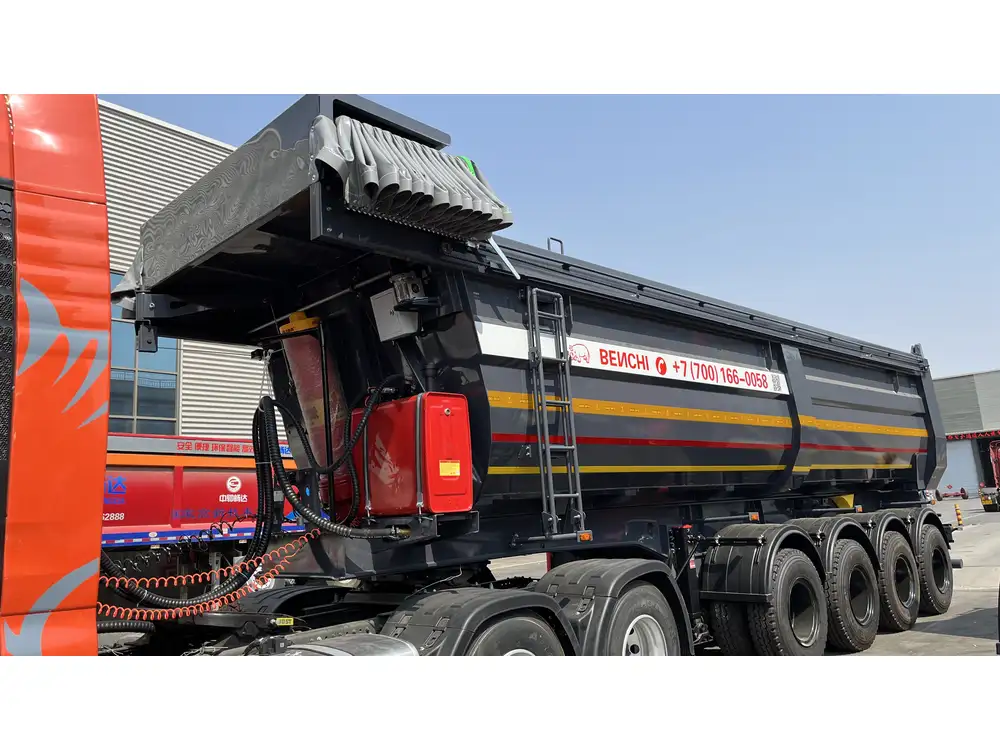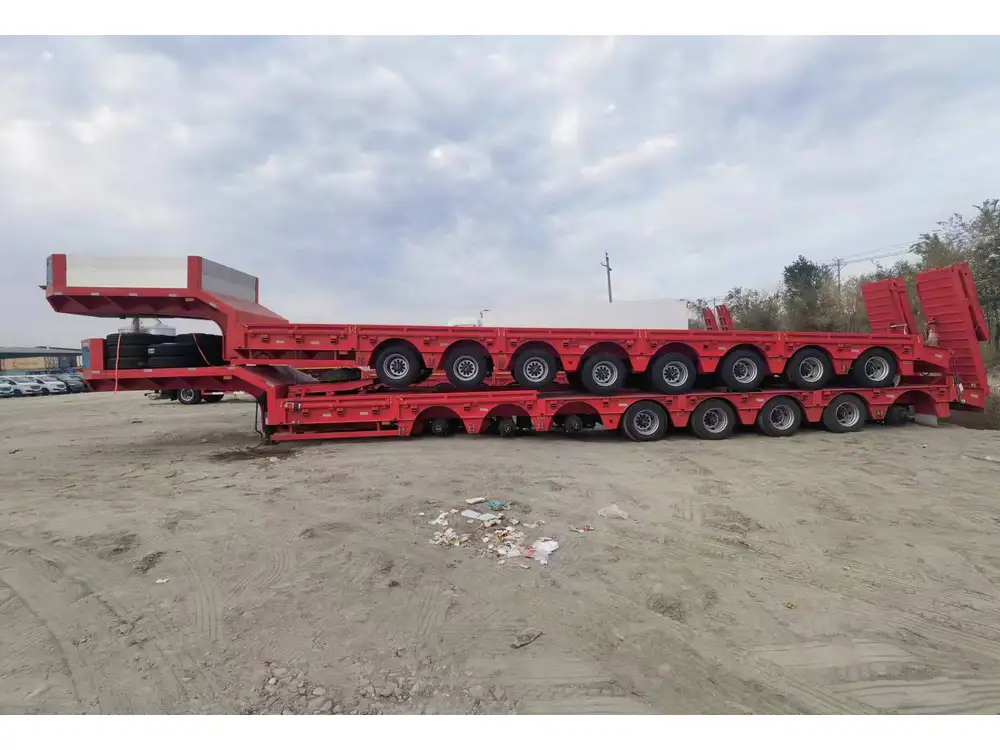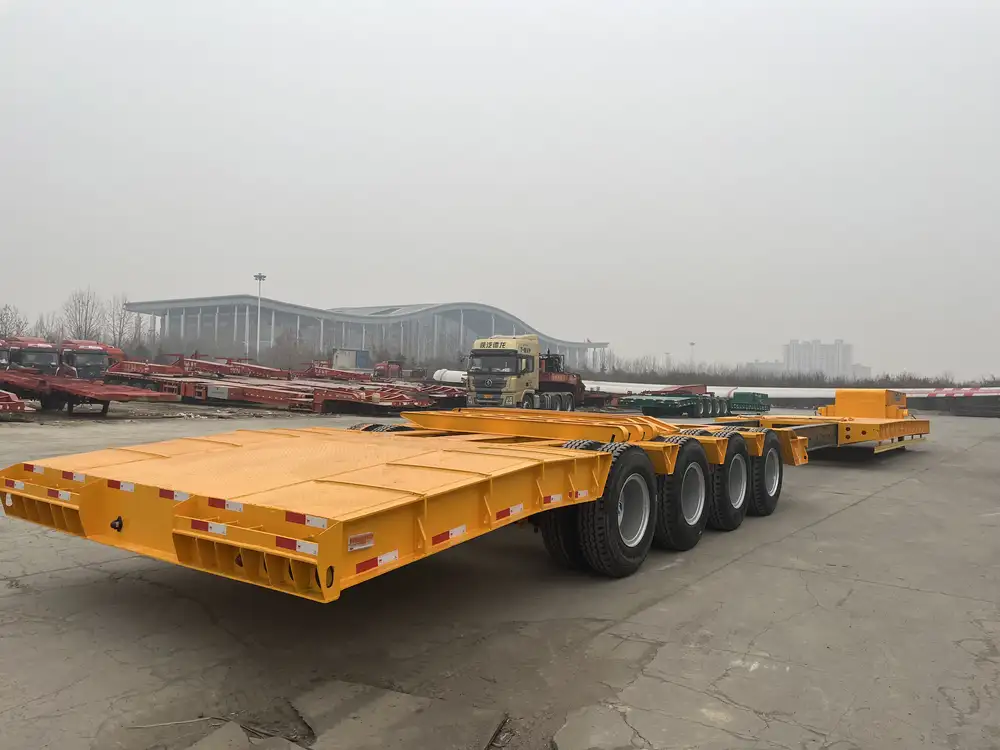Flatbed trailers have garnered significant attention within the transportation and logistics industries due to their versatility and efficiency. In our exploration of the dimensions and specifications of flatbed trailers, we address a common inquiry among potential users: How wide is a normal flatbed trailer?
Through this extensive guide, we will delve into various aspects related to flatbed trailer widths, types, regulations, and their practical implications on various applications in freight transport.
Table of Contents
- Standard Width of Flatbed Trailers
- Detailed Variations in Trailer Width
- Regulatory Standards and Compliance
- Applications of Flatbed Trailers
- Choosing the Right Flatbed Trailer Size
- Factors Influencing Width Selection
- Conclusion
Standard Width of Flatbed Trailers
Typically, flatbed trailers measure 8.5 feet (102 inches) in width. This standard has been established to facilitate compatibility across various loading docks, roadways, and regulatory frameworks. Transporting equipment and goods with broader dimensions pushes the limits of vehicle feasibility and is often subject to stringent regulations.
| Width (inches) | Description | Regulation Status |
|---|---|---|
| 96 | Standard for most flatbeds | Unrestricted |
| 102 | Maximum width allowed on roads | Unrestricted |
| >102 | Oversized load (permits required) | Subject to specific regulations |

Detailed Variations in Trailer Width
While 102 inches is the general benchmark, recognizing the variations in flatbed trailer designs is essential. Here’s a breakdown of different types of flatbed trailers and their width specifications:
Standard Flatbed Trailers
- Width: 8.5 feet (102 inches)
- Usage: Suitable for carrying various loads including construction materials, machinery, etc.
Lowboy Trailers
- Width: Up to 8.5 feet (102 inches)
- Usage: Designed for transporting heavy equipment that requires a lower center of gravity, ensuring stability.
Step Deck Trailers
- Width: Varies from 8.5 feet to 10 feet (120 inches)
- Usage: These trailers have a higher deck and a lower deck, tailored for taller loads that must comply with height restrictions.
Gooseneck Trailers
- Width: 8.5 feet (102 inches)
- Usage: Enables towing and maneuverability; widely used for hauling equipment.
Specialized Trailers
- Width: Varies (subject to specific transportation needs)
- Usage: Custom-made for specific cargo—creating widths beyond standard regulations.
Each type of flatbed trailer serves unique purposes, where width can impact load efficiency, safety, and overall transport logistics.
Regulatory Standards and Compliance
Regulatory compliance plays a critical role in the transportation industry. The Federal Highway Administration (FHWA) outlines specific dimensions for commercial vehicles, including flatbed trailers.
Key Standards:
- Length: Maximum trailer length is typically capped at 53 feet for certain configurations, including flatbeds.
- Width: Commercial vehicles must not exceed 102 inches in overall width for unrestricted use. Loads exceeding this dimension require permits, showcasing the need for compliance in broad applications.
- Height: To avoid overhead obstacles, maximum height is usually constrained to 13.5 feet.
Understanding these regulations is pivotal for transportation companies, as operating outside of these standards can lead to fines, complicated logistical challenges, or accidents.
Applications of Flatbed Trailers
Flatbed trailers are esteemed within numerous industries for their adaptability. Here’s an overview of distinct applications that harness their advantageous dimensions:

Construction Industry
Flatbed trailers transport heavy machinery, building materials, and structural components. Their open design allows for quick loading and unloading, essential for construction sites where time is of the essence.
Agriculture
Farming equipment and supplies often exceed the limitations of standard enclosed trailers. Flatbeds are ideal for moving tractors, harvesters, and other large agricultural tools, accommodating their size with efficiency.
Vehicle Transportation
Flatbed trailers are prominently used for transporting automobiles, motorcycles, and other vehicles due to their design that secures vehicles during transit without the risk of accidental damage.

Manufacturing
Manufacturers benefit from flatbed trailers’ ability to handle oversized shipments, transporting parts and products that are too large for traditional enclosed freight transport.
Heavy Haul
For oversized loads, flatbed trailers are customized for transporting items like wind turbine blades, large machinery, and steel girders, illustrating their profound versatility.
Choosing the Right Flatbed Trailer Size
When selecting a flatbed trailer, several factors influence the decision:
Type of Cargo: Understanding cargo dimensions and weight is the first step. Ensuring the trailer can handle the cargo’s weight without exceeding limits is crucial.
Transport Routes: Consideration of roadway restrictions, such as bridge height and width limits, is essential. Some routes may only allow specific trailer dimensions.
Loading and Unloading Facilities: Assessing accessibility is vital. Locations with cranes or forklifts can accommodate different widths compared to those requiring manual loading.
Frequency of Use: For businesses requiring varied sizes, investing in multiple trailers may be prudent to optimize flexibility and efficiency.
Regulatory Considerations: Familiarity with local and federal highway regulations can prevent unexpected roadblocks during transport.
By evaluating these parameters, transport managers can make informed decisions to select the most suitable flatbed trailer for their unique requirements.

Factors Influencing Width Selection
While the standard width is widely accepted, various specific factors may influence the selection of trailer width beyond regulatory norms:
Type of Load
Different loads necessitate different trailer widths:
- Standard Loads: Typically fit the standard width.
- Oversized Loads: May require wider trailers, typically necessitating a special permit.
Road Conditions
Transporting goods across rural versus urban areas can demand different trailer widths, contingent on roadway dimensions and limitations.

Equipment Compatibility
If specific equipment like cranes is used for loading or unloading, selecting the appropriate width may facilitate access and safety.
State Regulations
Variances in state regulations may affect width allowances. Transporters must be diligent with local laws to ensure compliance.
Seasonal Restrictions
Certain regions may impose seasonal regulations affecting vehicle width, primarily to protect road conditions during harsh weather.

Conclusion
Understanding the width of flatbed trailers—primarily established at 8.5 feet (102 inches)—is integral for anyone engaged in logistics and transportation. With various designs and applications, from standard flatbeds to specialized trailers, recognizing these dimensions alongside regulatory frameworks can significantly impact operational efficiency.
Through careful consideration of factors influencing width selection—cargo type, road conditions, and compliance with state regulations—transport managers can streamline their operations, minimizing the risks associated with oversized transport. Whether in construction, agriculture, or heavy haul, mastering the dynamics of trailer width enhances your ability to make informed decisions in a competitive market.
In conclusion, as the transportation landscape continually evolves, staying updated on trailer specifications ensures operational success while meeting the diverse needs of clients.



